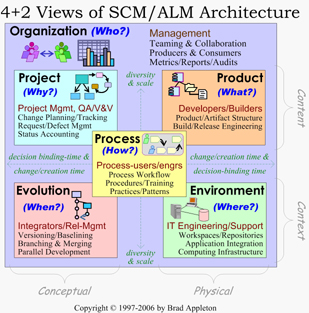- Essential CVS, 2nd edition, by Jennifer Vesperman
[See the sample online chapter containing the CVS quickstart guide] - Global Outsourcing with Microsoft Visual Studio 2005 Team System, by Jamil Azher
[See the online sample chapter on "The Business of Outsourcing"]
To be honest though, I really dont feel like CVS is very desirable among free Version-control tool offerings when we have the likes of Subversion, Monotone, Arch, and others that support the more recent paradigms and higher-levels of abstractions for working with project-wide streams (branches) and more.
The VSTS book is rather interesting. The "Global Outsourcing" parts of the title, and some of the corresponding content, would likely "turn off" a lot of folks. It even has a brief section about Agile development (to which, you'd think "global outsourcing would be anathema).
Mickey Gousset published a review of the book back in October, and it's worth a read. I mostly agree with the comments he makes. I think the book is pretty good, but there is another one coming soon that I expect I'll like a whole lot better, as well as several VSTS books available from Amazon.com.
Still, if you need to do a lot of distributed development across geographically dispersed sites, and want to use VSTS not just for its versioning capabilities, but also the tracking and coordination capabilities, this is probably the book to get.


